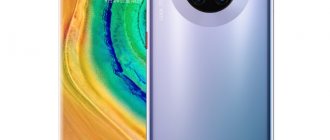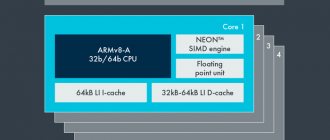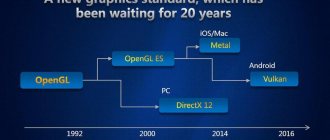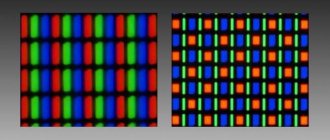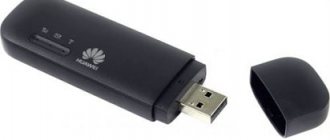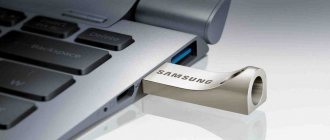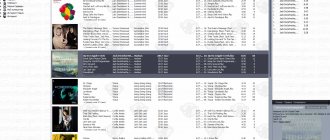Front-camera
In terms of quality, the selfies are, of course, inferior to the inaccessible Google Pixel 2 X in this regard. Despite this, it is clear that the device is trying very hard and is succeeding in some ways.
There is one single camera in front (24 megapixels), however, it can blur the background. It looks good if you don’t put it on a computer or zoom in.
No blur
With background blur
They also brought the same studio light into the device, just like the iPhone X. Here are a couple of examples.
Oops, sorry! Here it is called “3D modeling of self-portraits.” Well, so as not to repeat myself, as it were.
Video recording
Huawei P20 Pro boasts excellent 4K video recording quality. 30 frames per second, 34 Mbit/s - everything is at the level. The only thing missing is stabilization, which works exclusively in Full HD and at 30 frames per second, no more. But the videos turn out very smooth and without jelly.
Back to 4K. Surprisingly, the 5x hybrid zoom works here too. Look at the example below and notice how at first zooming spoils the image and after a second the picture is restored and pleases with excellent detail.
As a result, you shoot as if using binoculars with Ultra HD video recording function.
By the way, the smartphone copes well even with difficult shooting conditions. Of course, I'm talking about the night. Below is an example of 4K recording during the fireworks display on May 9th. It’s not a shame to show such a video to your friends.
Slow Motion
Like the Samsung S9 and Sony Xperia XZ2, our hero can record 960 frames per second. True, the resolution is only 1280 x 720 pixels, but that's okay. The main thing is that the videos look really cool. And if you show your imagination, which let me down when writing the example for this review, then there will be room to roam.
If anything, you will most likely get a normal Slo-Mo by the fifteenth take, not earlier. Here you need to get used to pressing the shutter release not before the event that should slow down, but after. Roughly speaking, we wait until the ball touches the ground and begins to bounce off it, and only then do we press the trigger. Trying to get ahead of the event is useless, because the segment of slow-motion video is extremely short. And the operator is most likely a nerd like me.
⇡#Camera
Huawei had to set a record in something - without this, the new devices, despite their high status within the Chinese brand’s lineup, would have a hard time competing with other flagships. Still, P-series smartphones used to be noticeably cheaper than the flagships of Apple, Samsung or Sony, but now they play in approximately the same price category. And this record is, of course, the number of rear cameras. There are three of them here.
The first consists of an RGB sensor with physical dimensions of 1/1.7″ and a resolution of 40 megapixels – this is a record among current smartphones for both indicators. Only Nokia five years ago (Lumia 1050 with a 1/1.5″ sensor) could boast of something similar. However, this is not a “real” 40 megapixels - in fact, it is a 10 megapixel “Bayer” sensor with clever subpixel grouping and, probably, double exposure for each frame (and not just for those marked by the application as HDR). The resulting result exceeds in color resolution what can be obtained from a “regular” 10-megapixel sensor, but, naturally, is inferior to what a “real” 40-megapixel sensor produces (like the Sony 7R III camera, for example).
| On the left is an image with a resolution of 10 megapixels, on the right is 40 megapixels, below are enlarged fragments of images | ||
By default, the P20 Pro shoots at 10 megapixels (3648 x 2736), but you can also activate 40 megapixels (7296 x 5472) if you wish. Examples above - it’s easy to notice that with a fourfold difference in resolution, the difference in detail is not at all as striking as it could be. Or even not visible at all.
This camera is equipped with a lens with an equivalent focal length of 27 mm and an aperture of ƒ/1.8 - far from today's records, but not bad at all. But the second camera, with a 20 megapixel monochrome sensor (physical dimensions - 1/2.7″) is already equipped with optics with an ƒ/1.6 aperture. And this is much more important, since it is she who is responsible for the most part for catching light in poor lighting.
| Examples of shooting with a wide angle, 3x and 5x zoom | ||||
The third camera is solely responsible for zoom – it is an auxiliary 8-megapixel module measuring 1/4″, the lens of which has an equivalent focal length of 80 mm and an aperture of ƒ/2.4. It allows you to count on a full 3x optical zoom with a maximum resolution of 10 megapixels and a hybrid (with software “fine-tuning” of the image) 5x zoom. In short, this is the best solution of this kind that exists today in the world of mobile cameras, and even by a large margin from the rest. Examples of pictures using zoom can be seen above.
| Examples of shooting with a wide angle, 3x, 5x, 10x zoom | ||||
You can also activate 10x zoom - in this case, the loss in quality will be obvious, but it is quite possible to shoot in this mode.
The camera works with an optical stabilization system - also one of the most effective among solutions of this kind. Huawei's words about 6 axes of stabilization, alas, look like just another marketing technique, and not the smartest one, but they do not affect the camera's capabilities - I was able to take a sharp image handheld with a shutter speed of up to 1/6 (in this case, however, I had to use my elbows rest against something). For a smartphone this is top class. Given its high aperture and the use of a monochrome sensor, which allows you to get more detail in low light and expand the dynamic range of the final image, the P20 Pro can easily be considered a leader in terms of low-light shooting.
An example of shooting with a multi-frame exposure and a “four-second” shutter speed
Especially if you shoot some static scenes and activate the multi-frame exposure mode - in this case, a shutter speed of 4 seconds will even be written in EXIF. This is factually a lie, but the user should not worry about this - the picture looks amazing.
The camera uses hybrid autofocus - the phase method is combined here with contrast when using a laser rangefinder. There are no complaints about the focusing system.
| Huawei P20 Pro, camera app interface | ||
The interface of the camera application is the same as that of the Mate 10 Pro: the fonts are in place, and different menus can be called up by swiping sideways on the screen, and special color schemes (bright, normal and faded).
An important point regarding the “intelligent” capabilities of the camera is that it constantly tries to determine the situation or object in the frame (from a pet to weather conditions) and adapt the settings for the highest quality shooting at that moment. The P20 Pro detects objects really vigorously, but with the settings everything is not always great - the software turns cats, already cute, into some completely radically smoothed out “cutes”. The same thing happens when shooting regular portraits, and in general - a person in this regard is still smarter than a machine, and the P20 Pro has a mode with manual settings, a virtual horizon (why is it not available in standard mode?) and the ability to shoot in RAW format. So, here you can turn off this overly annoying AI - while in the Mate 10 Pro this could not be done. Let's rejoice.
| Left – picture without HDR, right – with activated HDR | ||
HDR mode is not activated by default, it must be turned on separately, and this is logical - the P20 Pro camera has an excellent dynamic range reserve, constant use of HDR is not necessary.
What’s relatively new is the software system for “light placement” when shooting a portrait - it’s not always appropriate and looks more like a kind of toy and entertainment rather than a real tool, but why not. This system works with both the main module and the front one. Naturally, there is also a traditional software background blur mode with the ability to change the “aperture” after the fact in a virtual range from ƒ/0.95 to ƒ/16.
You can also activate black and white shooting - it’s worth saying that the image processing algorithms are well tuned, in this mode the picture looks truly purebred. In general, the picture produced by the Huawei P20 Pro camera is almost perfect by phone standards – at least at the current stage of development of mobile cameras. Yes, you can find fault with the detailing or edge distortion in photographs without zoom, but this is really a very good level: both in terms of dynamic range and contour sharpness (without “Samsung” excesses). And I already wrote above about the P20 Pro’s ability to shoot in the dark. There is a lot to dislike about DxO Mark, and you shouldn’t blindly trust their estimates, but in this case they are not far from the truth - based on all the parameters, Huawei has the best mobile camera to date.
Huawei P20 Pro: gallery
View all images (25)
The smartphone can shoot video with a resolution of up to 3840 × 2160 with a frequency of up to 30 frames per second and stabilization, as well as slow-motion video (with a frequency of 960 frames per second) with a resolution of 1280 × 720. Huawei keeps up with fashion here too. Stabilization is available only when shooting at a maximum resolution of 1920 × 1080 at a frequency of 30 frames per second - these are the parameters that are set by default.
Example of video shooting in 4K resolution
Example of slow motion video
The front camera in the Huawei P20 Pro is also extraordinary - 24 megapixels, a lens with an aperture of ƒ/2.0. But there is no autofocus or flash (except for the on-screen one). The focusing distance, however, is chosen correctly, the picture turns out good - both in ideal lighting and in relatively poor lighting. There are software improvements for selfies that are mandatory for Chinese smartphones - smoothing and whitening the skin, changing the shape of the face, and so on.
Specifications Huawei P20 Pro (CLT-L29)
- Kirin 970 chipset (4x Cortex A53 1.8 GHz + 4x Cortex A73 2.36 GHz, 10 nm)
- Mali-G72 MP12 graphics accelerator
- RAM 6 GB LPDDR4x
- physical memory 128 GB UFS 2.1
- no memory cards (there is a slot for 2 Nano SIM)
- OLED display 6.1'', resolution 2244 x 1080 pixels, 408 ppi, brightness 770 nits
- 24 MP front camera (f/2.0 aperture, 26 mm focal length, no autofocus, FHD+ recording)
- three rear cameras: 40 MP (RGB sensor, f/1.8, focal length 27 mm, pixel 1.55 microns, matrix size 1/1.78'', ISO up to 102400, 4K recording and Slow Motion 960 FPS) + 20 MP ( monochrome, f/1.6 aperture) + 8 MP (f/2.4 aperture)
- 4,000 Mach battery with SuperCharge fast charging
- OS Android 8.1 Oreo
- EMUI 8.1 software shell
- sensors: accelerometer, gyroscope, light and proximity sensor, compass, Hall and color temperature sensor, fingerprint scanner
- connectors: USB Type-C 3.1, no headphone jack in Huawei P20 Pro
- LTE Cat. 18 (ranges: 1-9, 12, 17-20, 26, 28, 34, 38, 39, 40, 41), Wi-Fi (802.11ac dual band), Bluetooth 4.2, NFC, IR port
- geolocation: GPS, Glonass, Beidou
- case dimensions: 155 × 73.9 × 7.8 mm
- weight 180 g
- colors: black, gold, pink and blue (twilight)
Samsung Galaxy A7
Price: 14,500 rubles
The rating of the best smartphones with a triple camera includes mainly flagship models, but recently budget phones with a similar design have begun to appear, among which the Samsung Galaxy A7 takes pride of place.
The camera characteristics are as follows:
- Main 24 MP lens with f/1.7 aperture;
- Second 8 MP wide-angle sensor with a focal length of 13 mm;
- 5 MP module for depth determination.
On topic: TOP best Samsung smartphones
Other characteristics include a 3300 mAh battery, a large AMOLED display and a fairly powerful Samsung Exynos Octa 7885 processor with a frequency of up to 2.2 GHz.
Design
In the case of the Huawei P20 Pro, on the one hand, everything is just wonderful, but on the other, there is still something to complain about. For example, in the front, the protruding bangs on which the front camera and earpiece sit are slightly annoying.
Fortunately, this island can be hidden programmatically. On the sides of the bangs there will only be service information with system icons, time, and so on. This looks much better, in my opinion.
The Huawei P20 Pro feels good in the hand. Streamlined shapes are always good ergonomics, but not very practical from the point of view of the risk of dropping the device on the ground. Yes, the smartphone is very slippery. You need to use it very carefully or pack the whole thing in advance in some reliable, thicker case.
One more point about operation. Dust and small debris very readily accumulate around the eyes of the rear cameras. To get decent photos for this review, I wiped the unit down 10 times before each shot. And still the output is this:
By the way, if you buy Huawei P20 Pro, then only in twilight color. No options!
There is also a blue color, but it seems to me that it cannot compare with our colors. The twilight color really sets the design of the device on fire. So, consider that those who want to buy Huawei P20 Pro have no choice - they need to look for the right color.
And no, you don’t need to mix homophobia into all this. The device is still not pink, but for normal guys it will do. Plus, this coloring is still unique. True, some Chinese (I’m talking about UMIDIGI Z2) are already trying to repeat Huawei’s experience.
From the unpleasant. The device has lost the 3.5 mm jack. In return, it acquired moisture protection with an IP68 certificate. At least something! By the way, the youngest Huawei P20 does not have it, nor does it have a headphone port. In this sense, the baby was deprived.
Briefly about the rest
Huawei P20 Pro is the company’s flagship for the entire year until Huawei Mate 11 comes out. And that says it all. The speed of operation, the quality of materials, the overall feeling of use - the smartphone is definitely worth its money, albeit not a small one.
The only clarification is that the smartphone is still not for games.
To be more precise, you can play on the P20 Pro, but you won’t be able to avoid drops in FPS. In the same "Tanks" the smartphone performs well, but from time to time there are sad drops in the frequency right up to 25 FPS. This once again convinces us that the graphics from Mali are sad.
There is also throttling. Not fatal, but still noticeable. Is the device getting hot? Yes, it can easily heat up to 50 degrees. The temperature does not rise higher.
Those who don't play games won't notice any inconvenience at all. The smartphone is really brutal.
What about the sound? Two speakers are responsible for external playback: the main one to the right of the USB Type-C connector and the conversational one. The sound quality is good, significantly above average. The situation with volume is exactly the same. However, in all these parameters, the P20 Pro is still slightly inferior to the iPhone X and Samsung Galaxy S9+. These guys managed to take the sound to a new flagship level, and our Huawei is hanging out nearby, next to the Google Pixel 2 XL.
Autonomy
Despite the fact that Huawei P20 Pro received a larger battery than Huawei P20 (4,000 versus 3,400 mAh), the smartphone still works for a day and no more. Or rather, it survives until the morning of the next day, but with 15-20% charge. This, of course, is no good. In this case, the screen glow time is 3-4 hours - this is the limit.
I didn’t have a fast charger with support for the proprietary SuperCharge protocol in my kit, but according to information on the Internet, a full charge takes an hour and a half.
By the way, there is no wireless charging. This is strange.
Huawei Honor 10i
Price: 18,690 rubles
This is the best Honor with a triple camera, which belongs to the mid-price category and comes with powerful specifications. It went on sale in March 2020. Honor 10i has a 6.21-inch IPS screen with FullHD+ resolution and minimal side frames. Due to this, it occupies 90% of the entire front surface area. There is a special vision protection mode that has been certified by TUV Rheinland. This minimizes the exposure of the user's eyes to UV rays.
The best triple camera phone is powered by a 12nm Kirin 710 processor clocked at up to 2.2GHz, assisted by 4GB/128GB of storage. Additionally, you can install MicroSD with a capacity of up to 512 GB. Good autonomy of the phone is ensured by a 3400 mAh battery.
The best smartphone is equipped with a triple camera with the following characteristics:
- 24 megapixel main module with f/1.8 aperture;
- Wide-angle lens with 8 MP resolution;
- 2 MP depth sensor.
There is an LED flash, optical stabilization and phase detection autofocus. The camera is supported by artificial intelligence, which automatically detects the current shooting scenario and, depending on this, sets the best parameters to create better photos. The algorithm recognizes up to 500 scenes, divided into 22 categories.
Bottom line
Regarding Huawei P20 Pro, I will have a simple conclusion. If you need the coolest camera available today for simple photography, plus a periodically very helpful 5x zoom, then the Huawei P20 Pro is the best purchase. An advanced night photography mode will be a bonus.
In all other photo and video scenarios, Huawei P20 Pro is either at the level of current flagships or slightly below them. Of course, I'm talking about Google Pixel 2 XL, Samsung Galaxy S9+ and iPhone X. Samsung has the best Slo-Mo, Apple has the coolest video, and for cool portraits you need to turn to Google. The smartphone itself does not exist, so we all still need to decide on the shore what we want to get from a smartphone. Huawei outperforms competitors in regular and night photography, as well as due to its still unique 3- and 5x zoom.
It’s too humane to name the price of Huawei P20 Pro at 54,990 rubles. This is the first impression. However, there are two very important clarifications here. The first is that Huawei is no longer some obscure brand from China. This is an A-brand, a world-famous company that directly competes with Apple and Samsung. If you missed it, now you know.
The second point is that the Russian representative office met our user halfway and did not raise the price, as other vendors do. For example, in Europe you can buy Huawei P20 Pro for 899 euros. In current realities, this is 65 thousand rubles, but here the device is officially sold for ten thousand cheaper. As they say, feel the difference.
Huawei Huawei P20 Huawei P20 Pro
Huawei P30
The average price is 39,990 rubles. Characteristics:
- smartphone with Android 9.0
- Dual SIM support
- screen 6.1″, resolution 2340×1080
- three cameras 40 MP/16 MP/8 MP, autofocus
- memory 128 GB, memory card slot
- 3G, 4G LTE, LTE-A, Wi-Fi, Bluetooth, NFC
- RAM capacity 6 GB
- battery 3650 mAh
- weight 165 g, WxHxD 71.36×149.10×7.57 mm
Although the Pro version has four cameras, its little brother is cheaper and still provides a flagship-level experience.
The P30 comes with a triple rear camera, the main module of which is equipped with a RYYB color filter, rather than the RGB filter usually found on modern mobile phone cameras.
This move by the manufacturer allows the Huawei P30 to take high-quality pictures even in low light conditions. The advantages of the camera also include the presence of optical stabilization, macro mode and Zoom 3x.
Pros : bright and contrasting OLED screen, beautiful and powerful smartphone that will run any heavy game at maximum settings, fast charging, fingerprint scanner right on the screen.
Cons : no wireless charging, no full water protection, very slippery and easily soiled case.
